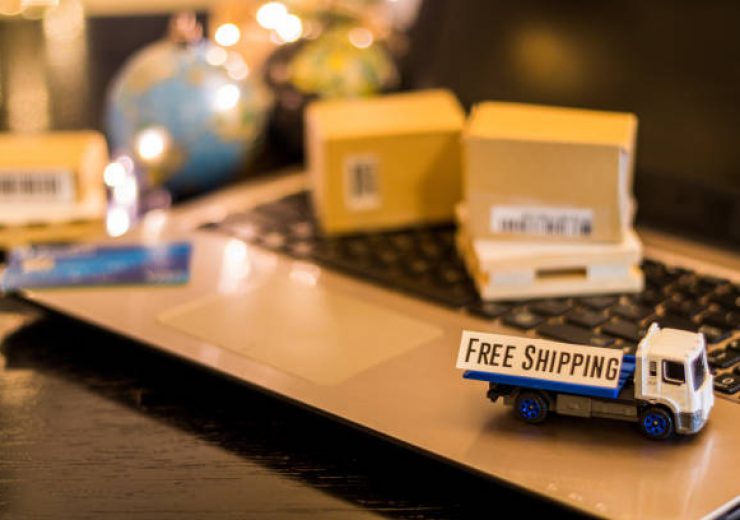Enjoy More Sales With The Right Features On Your Logistics Business Website

Due to the extremely competitive market, transportation and logistics companies need a dominant internet presence. As a result, quality websites help them raise market awareness of their logistics, improve customer satisfaction, and increase service productivity.
Let’s look at what you’ll need to build a logistics company website and what features you should include.
Types Of Logistics Company Websites
These important categories of websites for logistics companies can be identified:
- Firms that handle their freight forwarding and advertise their services on their website
- Freight marketplaces that bind carriers to manufacturers and retailers
Website Design For Logistics Companies: The Useful Features
What features will benefit transportation, trucking, logistics, and haulage companies? This is dependent on the type of business indicated above, however, there are particular characteristics that are highly suggested for creating a logistics or transportation services website.
Real-time Order Tracking
Freight senders and receivers must maintain their fingers on the pulse and know where their shipment is at all times. Real-time tracking is a must-have feature for every logistics website. The customer only needs to enter the shipment ID into the tracking area to track the shipment’s status. On their websites, major transportation and logistics companies provide order tracking. This function, in addition to being incredibly easy and stress-relieving, can lessen the possibility of unintentional delays or errors, saving your reputation.
Online Ordering
Clients can reserve their shipment 24/7 from any device using a simple form on the best logistics company website design. You’ll also need a consolidated order and invoicing management dashboard on your website for admins to see all of the order details, which will help them run their business more efficiently.
Cost and Time Calculation
For businesses, timely delivery is critical because it affects their procurement procedures, as well as for individuals who rely on your B2C (business to consumer) logistics. As a result, your website should notify customers about the projected delivery time so they know what to expect, according to best logistics website design practices. It’s even easier and more predictable to calculate transportation costs (depending on weight, distance, country, and other criteria in your logistics business model).
Secure Online Payments
Giving customers the option to pay for logistics services directly on your website is an incredible way to help the logistics business prosper. So providing a secure payment gateway is one of the top trucking website ideas. You can offer numerous payment alternatives to attract more clients by allowing them to choose based on their preferences.
Live Support Chat
In addition to shipment tracking, customers should be able to speak with a real person if they have an issue or have a query about the shipping procedure, documents, or delivery details. For a logistics website, live chats and contact forms are essential.
Comparison And Provider Profiles
If you want to build a marketplace-style logistic website, this functionality is for you. Allow transportation companies to create profiles with information about their services, rates, fleet photographs, and so on. A customer will appreciate a comparison of their expected delivery times, charges, and other conditions when placing an order.
Feedback And Awards
Potential customers want to know that they can trust you with their cargo. Feedback, stars, accolades, diplomas, and other items that improve your reputation should be shown prominently on the home page of your transportation and logistics company’s website.
Mobile Browsing
A logistics website that is fully mobile compatible is essential. Make sure that your web pages can be accessed and used on any device. Buttons, forms, and shipping tracking tools should all be well-placed and simple to use. You can also design a mobile app for your transportation and logistics company, but keep in mind that many people will not download it owing to device constraints or simply because they are unfamiliar with applications.
Website Accessibility
Make your transport and logistics company’s website as accessible as possible. Customers with various disabilities should be able to navigate your site without difficulty. Is it feasible to place an order or track it using only a keyboard? Is there appropriate error validation on forms? Do you have clear semantic markup that allows screen readers to navigate your site? These, and a slew of other accessibility difficulties, require further attention.
Usability For Non-tech-savvy Users
It’s critical to personalize the site to all consumers if you want to be the preferred logistics company in your region or throughout the world. It can be difficult for individuals who are unfamiliar with online ordering or who infrequently use Internet services to execute the necessary steps. Make it clear and intuitive what steps are needed. This task will be completed with a straightforward interface, the proper element arrangement, prominent buttons, clear CTAs, and numerous more UX & UI design improvements.
Conclusion
To enjoy more sales and satisfy your customers, the right features as described above are necessary.
Interested in transport and logistics website design services? Then, you have come to the right place.
Just like logistics companies know the value of time and money, so does our web development team. We will offer you a cost-effective solution with fast delivery.
Click here now to get your logistics business website.





